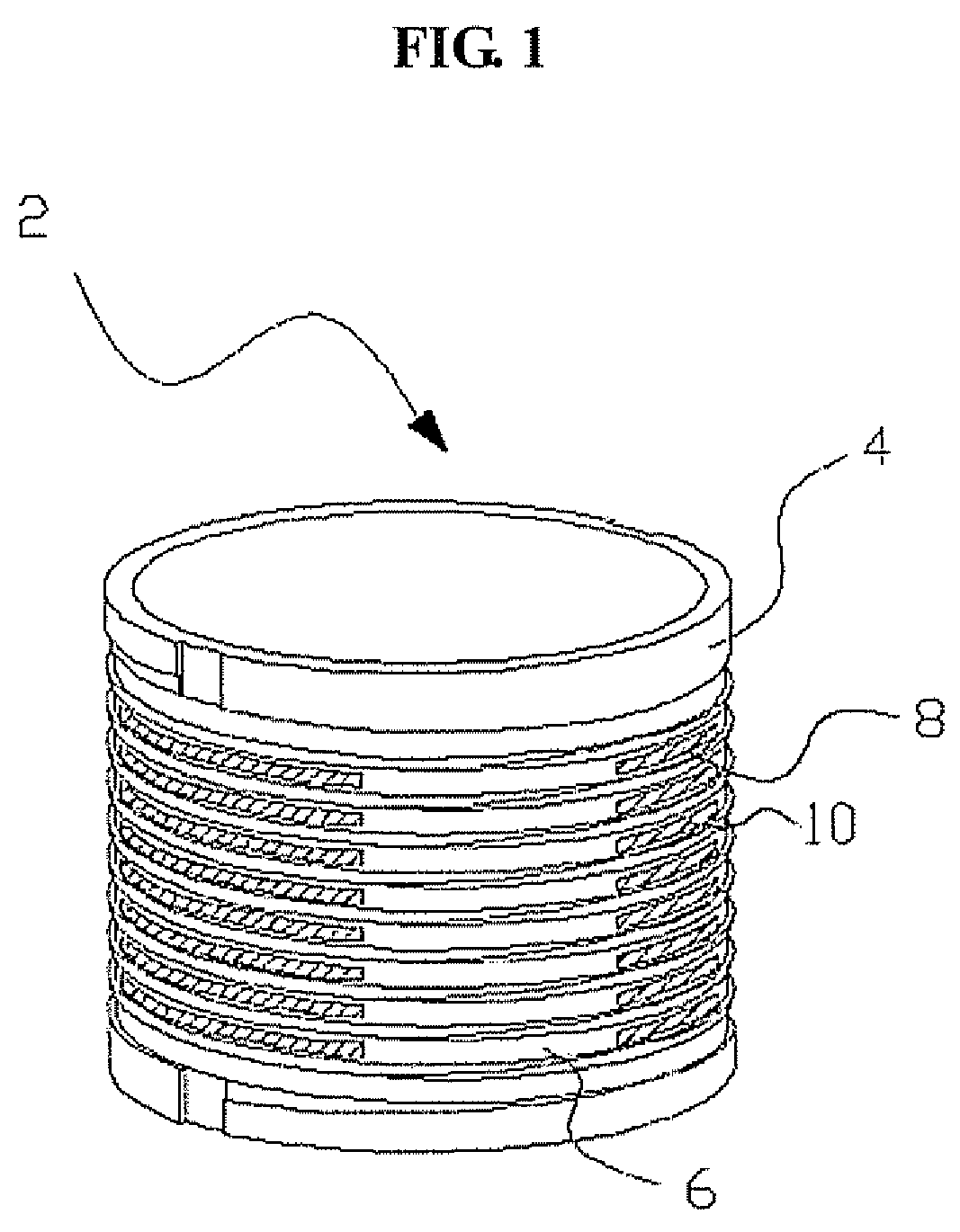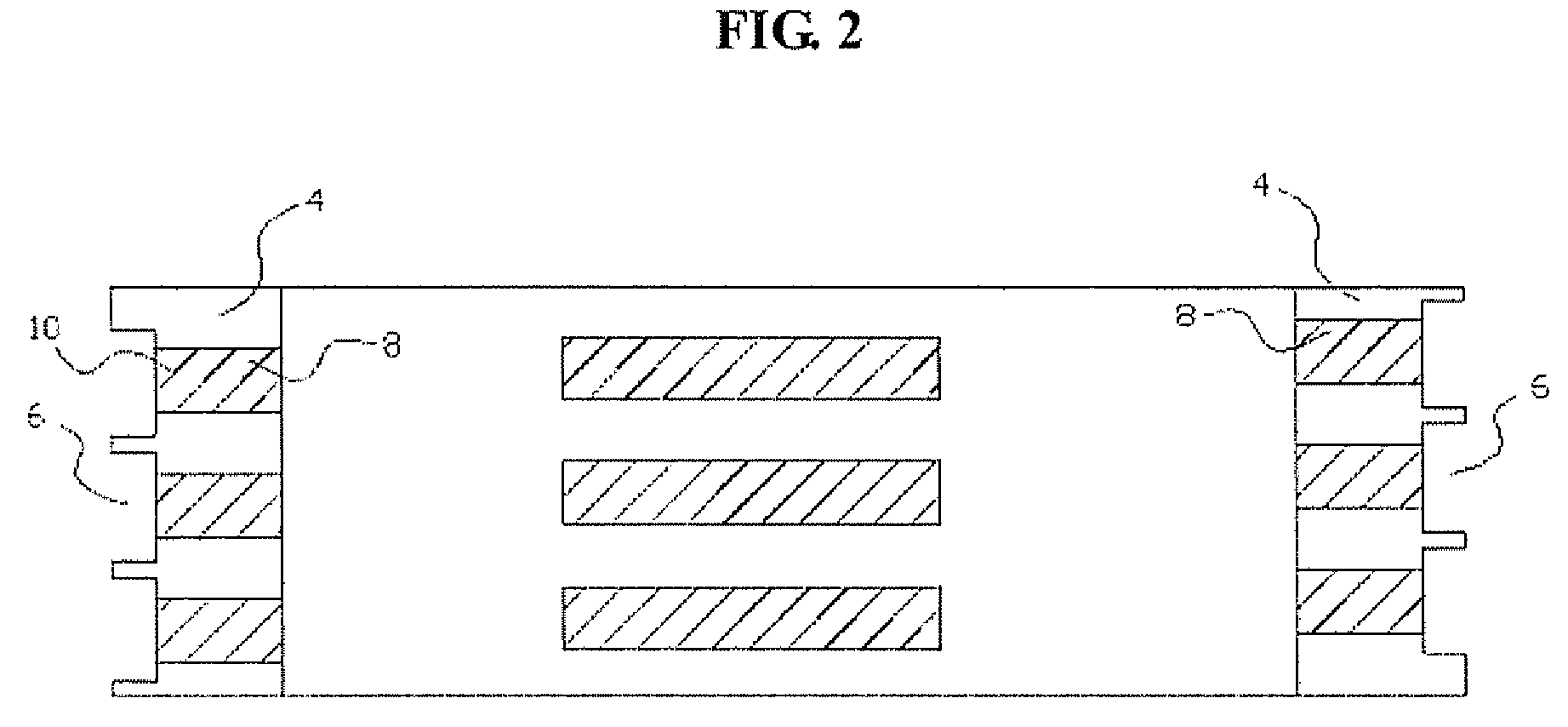Non-Inductive Winding Wire-Type Solenoid Bobbin
a solenoid bobbin and non-inductive winding technology, which is applied in the direction of superconducting magnets/coils, emergency protective arrangements for limiting excess voltage/current, magnetic bodies, etc., can solve the problems of power outages, cutting the supply of electricity, and inner wire damage, etc., and achieves the effect of convenient flow
- Summary
- Abstract
- Description
- Claims
- Application Information
AI Technical Summary
Benefits of technology
Problems solved by technology
Method used
Image
Examples
Embodiment Construction
[0026]Hereinafter, the present invention will be described in detail with reference to the accompanying drawings. It is to be understood that the present embodiment is illustrative and not restrictive.
[0027]FIG. 1 is a perspective view showing a bobbin according to the present invention, FIG. 2 is a sectional view of the bobbin according to the present invention, and FIG. 3 is a sectional view of part of the bobbin according to the present invention.
[0028]As shown in FIGS. 1 to 3, a non-inductive winding wire-type solenoid bobbin 2 according to the present invention includes a bobbin body 4, winding grooves 6, and connection channels 8.
[0029]In this case, the bobbin body 4 serves to provide a place for winding a superconductive wire or the like. The bobbin body 4 has the shape of a hollow cylinder. Any material may be used for the bobbin body 4, as long as the material is not affected by magnetic fields. Preferably, the bobbin body 4 is made of glass-fiber reinforced plastic or insu...
PUM
 Login to View More
Login to View More Abstract
Description
Claims
Application Information
 Login to View More
Login to View More - R&D
- Intellectual Property
- Life Sciences
- Materials
- Tech Scout
- Unparalleled Data Quality
- Higher Quality Content
- 60% Fewer Hallucinations
Browse by: Latest US Patents, China's latest patents, Technical Efficacy Thesaurus, Application Domain, Technology Topic, Popular Technical Reports.
© 2025 PatSnap. All rights reserved.Legal|Privacy policy|Modern Slavery Act Transparency Statement|Sitemap|About US| Contact US: help@patsnap.com



